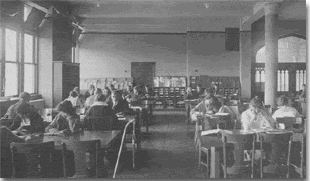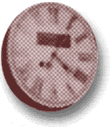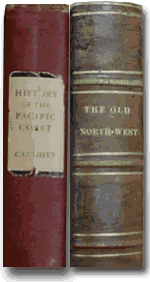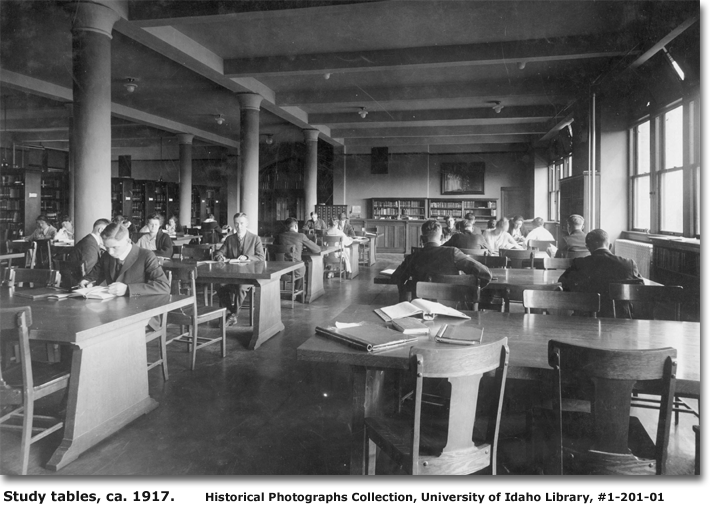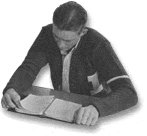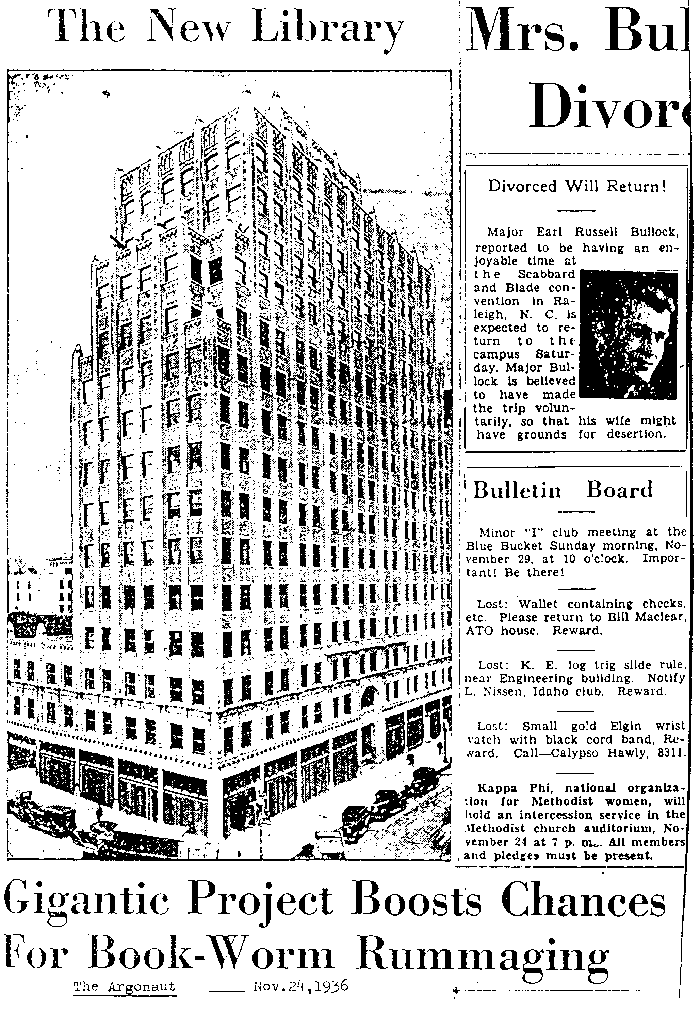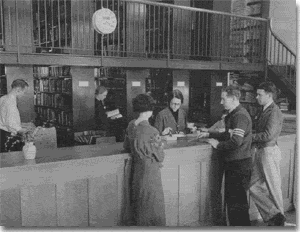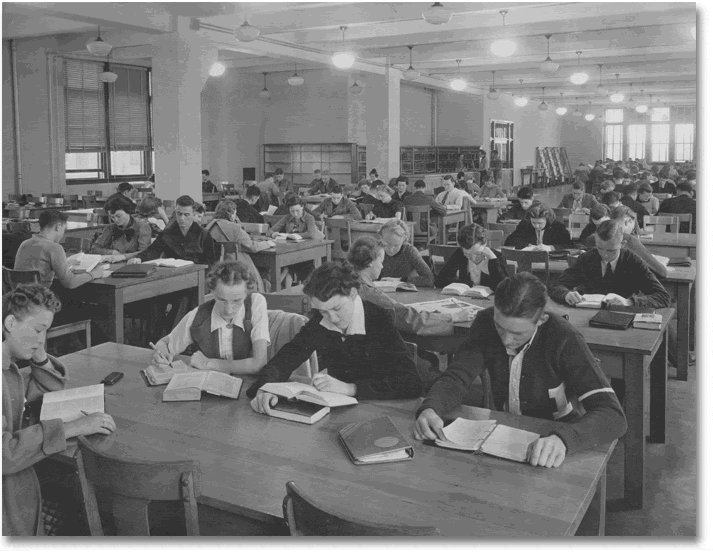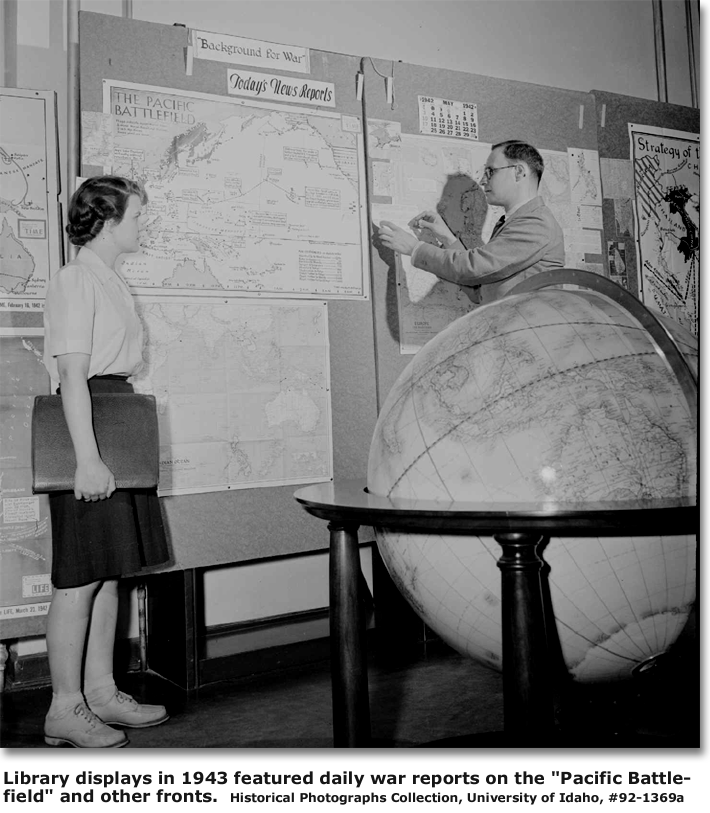A University Library Takes Root: 1909 - 1948
After functioning in the university’s gymnasium for a couple of years, and then in Morrill Hall for 16 months, all in the wake of the 1906 fire, the library moved again, in December 1909, to the south wing of the new Administration Building, where it occupied one large room, an office, and a small newspaper room.
The campus community was proud of its new library, which was well-lighted and ventilated and boasted new furniture and steel stacks. But it still lacked an important tool — a card catalog listing books by author, title and subject. Lack of a catalog meant considerable lost time in locating specific books for students and faculty. Work began on a public card catalog in January 1909, but continued only sporadically during staff’s spare time.
In order to bring the Library up to its full efficiency, a complete catalog is required, as an uncataloged library is less than one-half as efficient as one that has been thoroughly cataloged
The pace picked up, however, in fall 1913 when the library acquired another professional position — filled by Miss Ida Wolf, a graduate of Drexel Institute, Philadelphia. Wolf had had several years’ cataloging experience at the Iowa State Normal School in Cedar Rapids, IA, and began serious work on cataloging and classifying the library’s collection into the Dewey Decimal system. (As recently as the 1990s, the library would refer to its online catalog as "Ida.")
Wolf’s arrival also enabled the library to extend its hours — as students and faculty had been demanding — to include weekday evenings and earlier openings on Saturdays. Librarian M. Belle Sweet even began offering a few classes in library science — indeed, she aspired to develop a full-blown library school at the university (a dream that was never realized). She also saved documents of various kinds, which would help lay the foundations of the library’s special collections unit.
Meanwhile, Sweet sought out the standard historical works on the Pacific Northwest, including British Columbia. "We bought everything that pertained to Northwest history, insofar as we could wrangle the money," she later recalled. And at her urging, the university administration formed a faculty library committee in fall 1905 under her direction, to help develop a strategic, long-range approach to collection development.
Gifts were also an important factor in building the library’s collections. Principal donors included Senator William E. Borah. The frugal war years slowed the library’s efforts to build a collection (particularly German books, which became extremely hard to obtain).
And with increases in students and holdings, the library was soon pressed for space. A request to the Carnegie Foundation for $50,000 to build a separate library building was turned down. As Sweet reported to the Regents,
At present there is room for only one hundred chairs. Room is also required for additional shelving, as the space now used is overcrowded and books have to be stored in the basement, where they are being injured by dampness, and where they are difficult to access… In order to provide shelving for new books we should have at least ten floor cases like those now in the Library… Additional tables and chairs for fifty should be provided. By very much overcrowding, these could be placed in the present reading room…
But by 1914, the university was coping with general crowding — enrolment had grown by 50 percent in just three years, to nearly 1,000 students. So the push was to finish the south wing of the Administration Building. With that completed in 1921, the library was relocated to the first floor and the basement of the new addition.
The new space quickly proved inadequate, however, as the Idaho State Board of Education reported in the mid-1920s: "The University of Idaho is sadly hampered by lack of library space… Now there is hardly an hour in the day when students in considerable numbers are not turned away from the reading room because of lack of slots and table space."
During the early 1920s the library also suffered from particularly high staff turnover, due to its uncompetitive salaries, forcing the library to train inexperienced people as best it could.
Nonetheless, by the mid-1920s, a separate library building, with a $300,000 price tag, became a new rallying cry. With enrolment topping 2,000, the Argonaut quoted university president A. H. Upham as saying, "The big need on the campus is more library space and the institution must ask the state legislature for an appropriation for the next biennium in order to build a library building."
But the administration had a second motive — to free up the library’s space in the Administration Building, noted the Argonaut in August 1926: "Why does the University of Idaho need a new library? I. Because there isn’t room enough for the students in the present library. II. Because there isn’t room enough for the present library in the Administration building."
However, the optimism was unwarranted — the building didn’t materialize. Even the library’s operating budget, poor during the 1920s, grew abyssmal during the Depression. When the university sustained budget cuts, the library was usually among the areas worst hit.
Yet Sweet was feisty, and had no qualms about going straight to the president with her problems. Librarian Nancy Atkinson recalled that when Sweet discovered frogs in the leaky basement, she gathered them up and dropped them on the president’s desk, requesting more and better space. Usually, though, she used statistical reports to prove the need for space.
Eventually, in 1936, the university received a $50,000 federal grant to help build another addition to the Administration Building. When completed, most of the wing was given over to the library, though it was recognized even then that a separate library building was preferable. But that wasn’t to come for decades yet.
The library’s policy was to hire students for clerical work. And because many students were so poor, the library also bought copies of textbooks and placed them on reserve, which meant the reserve desk was very busy. As well, the library still functioned with "closed stacks", which meant staff still had to retrieve materials as users requested them, so the loans and periodicals desks were busy, too. In the early 1940s, library faculty voluntarily accepted a 10 percent salary cut to free up more money to hire students (at a time when the university had no retirement program or medical insurance).
By 1941 the library had seven librarian positions — university librarian (Sweet), assistant librarian, loan librarian, reference librarian, and two catalog librarians — in addition to three assistants. But by 1943, regular staff had dwindled to 4.5 — less than half the complement two years earlier — and librarians were performing multiple roles. Meanwhile, due to wartime enlistment, university enrolment plummeted — from 2,851 in 1940-41 to 953 in 1944-45 (the lowest level since 1920-21). The university’s population was buoyed, however, by some on-campus specialized military-training programs — up to 600 Army and 800 Navy personnel at a given time. So the library remained busy. Indeed, half the library’s second floor was taken over for military classrooms.
On the collection front, the library was making important strides. In 1941, Jerome J. Day’s personal library was donated to the university. Added to what Sweet had already collected of Northwest Americana, it made the Day Northwest Collection an outstanding asset. Meanwhile, the library had been forging strong ties with the Washington State University Library, eight miles away in Pullman, WA, and UI professors were making good use of interlibrary loans. On several occasions, staff of the two libraries even attended joint picnics.
Short, stocky and still in good health, Sweet was now well into her 60s. An Associate Librarian, Martin Schmidt, was hired in 1946, the intention being to train him to replace Sweet. But Schmidt said he was not being given enough responsibility, and took a job at the University of Oregon Library in 1947.
That same year, Lee Zimmerman, then director of the library division of the Minnesota State Department of Education, heard that Sweet was retiring and contacted the university. He came for interviews and lunch with the dean and president in October, during which he was told that a new library was in the works — though not until after a new engineering building was obtained.
Zimmerman didn’t begin work until the following spring, March 1948 — "some difficulties having arisen over Sweet’s retirement," he later recalled.
Sweet stayed on for three months as acquisitions librarian, which eased the transition from one university librarian to the next. Retiring at age 69, she had served continuously for 43 years, under nine university presidents.
